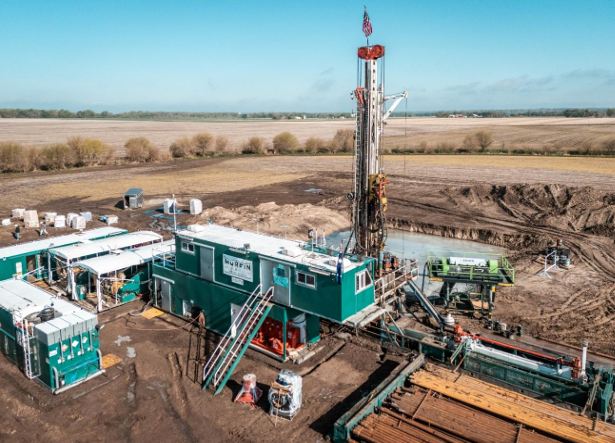HyTerra’s drilling campaign in Kansas has added fresh momentum to the emerging natural hydrogen sector, with the McCoy 1 well at its Nemaha project recording mud gas concentrations of up to 83% hydrogen and 5% helium.
The results, taken just months after the start-up’s first exploration efforts in the state, extend evidence that hydrogen-rich systems are not confined to isolated traps but span broader fault structures.
The step-out well lies nine kilometers from the Sue Duroche 3 site, which reported hydrogen levels as high as 96% earlier this year. By confirming high concentrations at a second location within the same fault block, HyTerra strengthens its case that the Nemaha project could host a scalable hydrogen-helium resource. The discovery also underscores the geological distinction between Kansas’ conventional helium reservoirs—typically yielding 0.25% to 2.5%—and the Nemaha finds, where helium grades reach 5%.
Helium’s elevated presence could be commercially significant in its own right, given tightening global supply and rising demand for semiconductor manufacturing and medical imaging. The dual prospect of natural hydrogen and premium-grade helium positions Nemaha as a differentiated play in the broader decarbonization and energy security narrative.
HyTerra has been advancing rapidly. Since launching its Kansas drilling program in March, the company has confirmed hydrogen concentrations of 92% in earlier samples and now holds 3,116 contiguous net acres around McCoy 1. The project’s proximity to Interstate 70, a central US transport artery, highlights logistical advantages should commercial production proceed.
The company, backed by Fortescue Future Industries Technologies with a 40% stake, is preparing to transition from exploration to production testing. Executive Director Benjamin Mee noted that ongoing data analysis will determine whether McCoy 1 shares the natural fracturing characteristics observed in earlier wells such as Blythe 13-20 and Sue Duroche 3. Only through sustained flow testing, he emphasized, can steady-state production rates and compositions be validated.
Stay updated on the latest in energy! Follow us on LinkedIn, Facebook, and X for real-time news and insights. Don’t miss out on exclusive interviews and webinars—subscribe to our YouTube channel today! Join our community and be part of the conversation shaping the future of energy.
